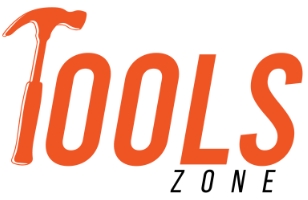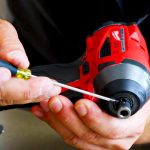Table of Contents
Nail guns and hammers are two essential tools in the woodworking lineup. Everything from framing to roofing needs you need either one of their driving power to make nail joints. Mainly, a nail gun is an advanced form of the hammer with an automatic nail insertion system. Packed with electric and mechanical attachments, Nail guns have eliminated the pounding fatigue in working. Still, many workers prefer hammers even after fatigue. But how efficient are nail guns than traditional hammers in real-life scenarios? Hence, in this article, we will explain which one is best to use according to your working aspects.
Work Speed
Starting with work speed, it is essential for industrial projects to complete their task within a short period of time. But framing hammers require a little longer time for their manual operation. By the time you pound a single nail with a framing hammer, you can pound 3 pins with a nail gun for their quick and powerful shots. If you are a professional who needs a high volume of nailing in a limited time, a nail gun will serve you better than a traditional framing hammer in terms of work speed.
Depth Precision
Next up is, depth precision. Each time a nail gun is fired, the impact speed remains constant. All the nails will go through the same levels of depth. Since different applications contain different depths, if you aim for an equal outcome for all portions of your surface, the nail gun is the way to go. In case you have to maintain different depths in the same wood, the hammer will perform better. Although all nail guns have depth adjustment, they will waste your time while changing depth repeatedly.
Surface Durability
After depth, let’s focus on the surface strength. Each portion of wood has a certain strength. Crossing this barrier may break the wood. A nail gun impacts each time equally, so it can tear apart the thinnest portion making the project worthless. Hence, a hammer will perform better on a thinner surface. On the contrary, a hammer bends the nails on a hard surface lacking the straight hitting direction, while a nail gun does the job perfectly with parallel impact. Observe your application surface in the first place before choosing.
Fatigue And Injury
Hammers require the use of two hands, one hand for holding the hammer, and another hand for holding nails. After a few moments of work, you will feel pain in your wrist and fingers having blisters. Sometimes the hammerhead can slip off on your hands and cause injuries to your fingers. But a nail gun does work itself; all you have to do is hold the gun and pull the trigger. Meaning, nail guns are perfect for long work sessions without a chance to get injuries, as long as you don’t shoot in anyone’s face.
Workspace Freedom
Most of the nail guns are powered by an electric air compressor. So, there is a chance to create a mess with cords and hoses. Although cordless nailers are available on the market, still most people use corded nailers on the job site for better performance.
If you can manage the required power-supplying gears, an electric nailer is recommended for you. Otherwise, go for cordless nail guns. Do keep in mind the runtime, unless your project will be delayed in case of sudden battery failure. In case, you also find trouble charging the cordless nail gun, pick traditional hammers for your work as the final option.
Maintenance
If your career depends on tools, you must keep them usable all the time. A hammer needs literally zero repairs as they come in all-in-one steel and fiber body. Since a nail gun works mechanically, you will often get jammed nails in the magazine, air leakage in the compressor, or motor failure. If you do not have proper kits, skills, or time for maintenance, traditional hammers will keep up your productivity more than a nail gun.
Carrying Advantage
Nail guns can give you transportation advantages because they have a magazine that can hold at least 100 nails or more at once. Whereas, you need to carry extra bags while pounding nails with hammers which feels annoying. As a result, nail guns are effective for having fewer hassles while pounding nails. But keep in mind that nail guns require an air compressor or electricity, so portable power sources must be carried on the job site unless you use a cordless nail gun.
Control
Our next concern is the controls. Professionals prefer hammers because it provides a lot of control. Meaning, it helps in driving a nail to a snugly fit in tight spaces. Plus with a hammer, you can control the depth of the nail a bit more, and make sure it is driven all the way in without having concerns about power sources or cord lengths. Even though the nail guns have a variable speed dial for versatile nailing jobs, it is limited to 6 or 7 settings. For a very soft and accurate control as needed on your application, you will find nothing as valuable as a traditional hammer.
Hammers have been around as long as humans have with effective design, and the nail guns are powerfully driven forces that can get you working through a job quickly and efficiently. There is a great amount of force behind both nail guns and hammers, and which you choose to use is entirely dependent upon your personal preference, comfort, and experience.










Leave a Comment